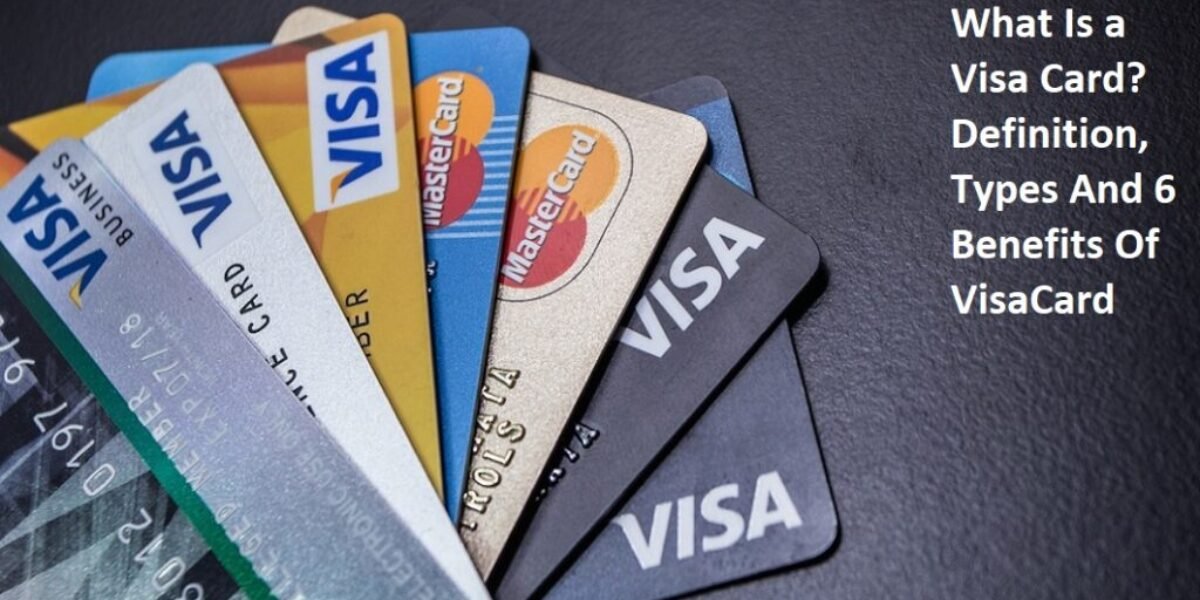What Is a Visa Card? Definition, Types And 6 Benefits Of VisaCard
What Is a Visa Card? Definition, Types And 6 Benefits Of VisaCard
Post Outline
A payment card with the Visa network and the Visa logo is referred to as a Visa card. The business started out only offering credit cards, but it has since expanded to offer debit, prepaid, and gift cards as well.
Despite having the Visa logo, cards are not actually issued by the organization. Instead, they are issued by financial institutions that work in partnership. So what exactly is Visacard all about? We will discuss that in this article.
Understanding Visa Cards
More than 200 countries and territories around the world have businesses that accept Visa cards. Visa is a well-known processing network. Mastercard, American Express, and Discover are additional payment processing businesses that own payment processing networks.
For all of its payment card products, a financial institution decides to work with a single provider of a transaction processing network, such as Visa. Each issuer chooses the clients to whom it will extend Visa cards and establishes its own terms and conditions for the cards it offers.
Through a variety of financial institution partnerships, Visa cards are made available to individual and business customers. Bank transaction fees and Visa network fees are included in service agreements. By means of various kinds of service agreements, Visa also collaborates with retailers.
Every time a customer uses a Visa card, a small transaction fee is paid by the merchant to Visa Inc. as part of the fee for the network processing services that the company offers. The Visa payment processing network is used to carry out transactions with each Visa card.
Payments can be accepted electronically and debited—or credited—to a cardholder’s account by working with Visa as a primary payment processing network. Visa credit and debit cards are accepted by merchants.
Every Visa card has a microchip that protects the cardholder from card fraud and a unique 16-digit number that is printed or embossed on the front. On the back of the card, there is a magnetic stripe and a panel for the cardholder’s signature.
Types Of Visa Cards
As noted above, there are several different types of payment cards that are branded with the Visa name and use the Visa payment processing network: Visa credit cards, Visa debit cards, and prepaid and gift cards.
1. Visa Credit Cards
Based on their credit reports, financial institutions issue Visa credit cards to customers they deem creditworthy. Visa credit cards can be used at shops and automated teller machines (ATMs) all over the world, offering cardholders convenience and security.
Visa cards may offer a variety of benefits, including cash back rewards, introductory annual percentage rates (APRs) of 0%, and exclusive benefits when shopping at a specific retailer. Traditional Visa cards only provide minimal benefits and services to cardholders. Signature While Visa Infinite cards provide premium services and benefits to the most creditworthy cardholders, Visa cards offer more rewards and benefits overall.
On the front of a Visa card, the account number and cardholder’s name are embossed or printed. On the back of the card is a unique three-digit validation code. The cardholder’s security is increased thanks to this code.
2. Visa Debit Cards
Access to regular banking accounts, such as checking and savings accounts, is made available to customers by Visa debit cards. They function similarly to a credit card and can be used to conduct standard banking operations at a branch or through an ATM.
Cardholders need a personal identification number (PIN) to carry out transactions (PIN). The cardholder’s name, a 16-digit account number, an expiration date, and a CW number are all embossed or printed on the back of Visa debit cards in addition to the other information mentioned above.
However, the associated deposit account number and the 16-digit number are not the same.
3. Visa Prepaid And Gift Cards
Visa provides a variety of prepaid and gift cards. Both of these cards have a printed 16-digit account number on the front and are available for purchase from merchants. A deposit or credit card account is not connected to prepaid cards. These cards have a predetermined credit limit that is loaded onto them.
This implies that the cardholder is not permitted to spend more than has been loaded onto the card. 8 These cards work everywhere that accepts Visa, and in some cases, they can be reloaded for use in the future. Like prepaid cards, gift cards come preloaded with a certain amount.
They are usable anywhere that accepts Visa. Some gift cards can only be used at a particular store. In most cases, once a gift card has been used up, it cannot be reloaded. On the back, they have a unique PIN number.
Benefits Of Visa Card
- Convenience: Visa cards are widely accepted by merchants around the world, making it easy to use them for purchases and transactions.
- Security: Visa cards come with built-in security features such as fraud protection, purchase protection, and zero liability protection, which help protect you against unauthorized transactions and fraud.
- Rewards: Many Visa cards come with rewards programs that offer cash back, points, or miles for purchases made with the card.
- Travel benefits: Some Visa cards offer travel-related benefits such as travel insurance, rental car insurance, and access to airport lounges.
- Credit building: Using a Visa card responsibly and making on-time payments can help you build your credit score over time.
- Online shopping: Visa cards can be used to make online purchases securely, with added security measures such as Verified by Visa, which helps protect against unauthorized use.
Overall, using a Visa card can offer many benefits, from added security and rewards to convenient and widely accepted payment options.
